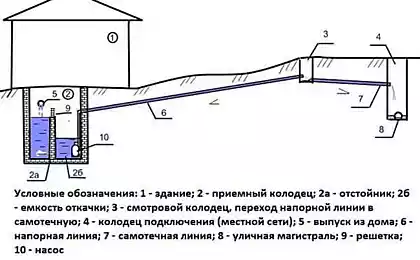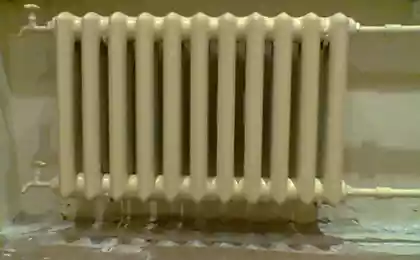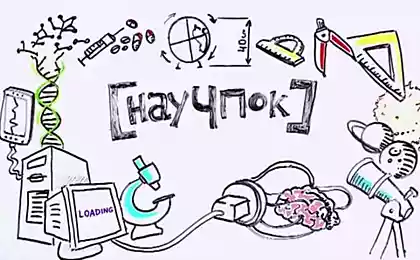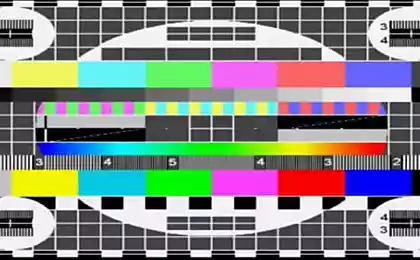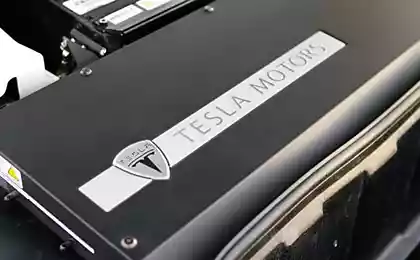850
Tips for “dummies” – how to assemble a battery
Why collect yourself? Because batteries are an area where the finished product is always screwed up. They're always unreasonably expensive. It is always not possible to get the right size, which, of course, is unique for each device. There is always no necessary capacity, but only those that are designed to run from the socket to the socket within the city limits.
Especially loudly scold manufacturers when you get into a force majeure situation. You're out of touch because the communicator died in the cold. You can’t take off the lucky moment, because your battery on the camera ran out, and the spare from the company costs $50. Or you sit and miss it because your laptop lasted an hour.
But you can build a battery that will be limited to only two parameters: price per watt hour and energy density. All other characteristics you will choose yourself.
The article is written for amateurs and amateurs.
Just one but. This article is NOT about batteries more powerful than a few kilowatt hours.
Just because I had no experience using these batteries. I didn’t build electric cars or make autonomous power systems for the home. The principles of creating such batteries coincide with the usual ones, so you should read this article, but the equipment is used completely different. So for information, be sure to go to the forum "electrotransport.ru" or ForumHouse.ru.
Theory on the fingers
An element, a cell, a “bank”, a “battery” is something that accumulates and releases energy. From the battery cells depend on all the characteristics of the battery.
A battery is already a set of many elements. Several cells are connected to a battery when the characteristics of one cell are small. If you connect consistently, the tension increases. In parallel, the battery capacity increases. It can include not only banks, but also any control electronics.
Voltage is the force with which a battery can shock a consumer. It is only a characteristic of the battery, does not depend on the consumer.7 Measured in volts (V).
Current strength - the more it is, the more the consumer consumes electricity. Measured in ampere (A).
Capacity is a characteristic of the battery, measured in ampere hours (Ah). For example, a capacity of 2Ah means that the battery can give current to 1A for two hours and 2A for one hour.
The battery capacity also depends on the discharge current. Usually, the larger it is, the smaller the capacity. Battery manufacturers usually indicate the capacity obtained when discharged with some tiny current of 100mA.
On the right are the characteristics of the Li-ion battery, which is discharged at different current strength. The higher the current, the lower the discharge curve.
C is a letter of the Latin alphabet, which measures the ratio of current strength to battery capacity, that is, how many times the current exceeds the capacity. If the battery has a capacity of 2Ah and is discharged at a current of 4A, then we can say that it is discharged at a current of 2C. The thing is that the greater the capacity of the battery, the easier it is to give current, and therefore this characteristic is more convenient to use than just amperes.
Energy is the characteristic that allows you to compare batteries with different voltages. Measured in watt hours and roughly calculated by multiplying the battery voltage by its capacity. It is numerically equal to the area of the figure under the discharge curve.
Parrots capacity and watt-hours of energy
Suppose we have two batteries of the same capacity – 2200mAh. But one is lithium-ion and the other is nickel-metal hydride.
Does this mean that both batteries have the same amount of energy? Will the same device work from both cans the same time?
In fact, looking only at the characteristics of the capacity, you can not compare the energy that can accumulate and give the battery. To do this, you need to know the nominal voltage on it.
Roughly estimate the amount of energy in watt hours can be, multiplying the nominal voltage of the battery by its capacity. And we can do this.
For NiMH: 1.2 volts * 2.2 ampere hours = 2.64 watt hours
For Li-ion: 3.7 volts * 2.2 ampere hours = 8.14 watt hours
... that the energy of a Li-ion battery of the same capacity is 3 times greater than NiMH.
But this is just a rough "estimation." Thus, a voltage of 1.2 volts on a NiMH cell is the maximum voltage corresponding to the full charge of the battery. When discharged, it will only fall, and the real energy will be slightly less than 2.64 watt-hours. However, this is the method of calculating the battery energy we will use to compare their characteristics.
Battery types
NiMH - Nickel-metal-hydride
Batteries of this type are obsolete and added for comparison. But sometimes it makes sense to think about buying them — for example, when you need to make a replacement for a dead NiCd or NiMH battery. That’s what they put in cheap radio-controlled models.
Caprices in charging, require a quick charge of complex devices.
- They lose power over time. LSD batteries (Long Self Discharge) do not have this disadvantage.
Have a “memory effect”, that is, temporarily lose part of the capacity in partial discharges. They only like full discharges. LSD batteries also lack this disadvantage.
- They have low energy density.
Overcharging is harmful to them, but not dangerous, so that from these cans you can make a battery just like that, without protective electronics.
The most popular size for these “cans” is ordinary AA, that is, with a finger battery.
Li-ion - lithium-ion
They have the highest energy density.
Quickly discharged when used in the cold.
You may have experienced this harmful property if you used your mobile phone in the winter outside. The battery is magically discharged and you are left without communication.
- They spoil at below 2.5V.
Explosive when recharged above 4.2V.
That is why many Li-ion banks have a special charge under the case, which turns off current at voltages below 2.5V or above 4.2V. These batteries have the word “protected” in their name. Unprotected banks can not be used in the battery without a special fee. For more information on Li-ion battery protection and balancing, see below.
They lose capacity over time, even from lying on a shelf.
Especially quickly lose capacity at high temperature.
That’s why laptop batteries are so quickly destroyed. They are located close to the CPU and graphics card, which are very warm, and even with a constant 100% charge - all conditions for dying quickly. Here is the data from the battery university:
The popular size for lithium-ion “cans” is 18650 (18mm wide and 65mm long). This is what is used in laptop batteries. You may never have seen them behind a plastic battery case, but sometimes you can find them there. The same is used in the electric sports car Tesla Roadster.
Li-polymer - Lithium polymer
Fully compatible with Li-ion.
Unlike Li-ion, they can give strong currents – 10–40C.
+ Can be any thickness and shape. Suitable for powering very miniature devices, like spy stuff.
+ Sold, as a rule, in an already assembled battery, with protective boards and plumes for balancing - convenient!
- Even more explosive and fire-prone.
- They work even worse in the cold. Look, for example, at this graph:
LiFePO4 - Lithium-iron-phosphate
Further evolution of lithium batteries. The batteries of the future. Unlike Li-ion, they are:
not afraid of frost;
+ not fire-prone;
+ give currents up to 50C;
can be charged with a strong current in 15 minutes;
+ have a huge number of charge-discharge cycles (2000-8000 before losing 20% capacity2);
+ practically not subject to loss of storage capacity 3.
Disadvantages compared to Li-ion:
They are more expensive and have less capacity;
have a lower energy intensity;
Incompatible with the usual Li-ion elements due to a different voltage range - 2-3.65V.
And just like Li-ion, they require their voltage range of 2-3.65V.
The most respected company in the LiFePO4 battery market is A123 Systems. She also developed this technology.
The popular size for "cans" - 26650 (26 mm wide and 65 in length) - was introduced with the filing of the same A123 Systems.
LiFeYPO4 – Lithium-Iron-Yttrium-Phosphate
A kind of lithium battery that I don’t know about, except that adding yttrium increases the number of charge-discharge cycles. Well, we'll see.
Lead-Acid - Lead-acid
They have the lowest energy density.
Slowly charge up to a few hours!
At high currents (by their standards – this is what is above 0.1C) can not give half the battery capacity.
- Very sensitive to temperatures.
They have a small number of charge-discharge cycles - from 200 with hard handling to 800 with sparing.
In the case of a serviced battery, it requires maintenance.
- Damn cheap!
I would like to mention the good old lead-acid batteries here. Because every reader will probably have a question - and why the hell all this is necessary when you can buy a 12-volt box in any auto parts store? Why don't we look at them here?
Firstly, because lead-acid batteries are sold already assembled in a 6-12V battery, which does not converge with the title of this article.
Second, lead-acid batteries are such a broad topic that they deserve a few more articles.
Third, I find them too heavy for all sorts of interesting things.
All this does not negate the fact that lead-acid batteries are a great thing when you need cheap energy. See, for example, ForumHouse.ru, section "Autonomous home".
Comparison
There are many tables on the Internet comparing the characteristics of different types of batteries. And all these tables have the same drawback: they compare spherical horses in a vacuum. So I compiled my own, with specific examples: type example of watt hours at: $ per watt hour capacity of cents per watt hour of energy.
For example, I came to the following conclusion:
To LiFePO4 the future. In the long run, they benefit even from lead-acid batteries on price. Well, with the pluses of iron-phosphate and minuses of lead - even more so. This is the only thing that can be used to assemble electric vehicles. And the only thing you can get out in the cold.
The highest energy density is in branded Li-ion batteries. If you have to carry them on, then this is the most reasonable choice.
Sometimes it makes sense to take a finished lithium polymer battery and not steam.
Connecting elements into a battery
Serial connection
This is when the positive (+) pole of each element connects to the negative (?) pole of the following:
The voltages of the elements in this case add up, and the capacity remains the same.
Consistently connected elements need to be balanced.
The fact is that even banks from the same party have slightly different characteristics. And they charge at different speeds.
Take a battery of three consecutively connected elements. The voltage on the fully charged element is 4.2V. A fully charged battery should have a voltage of 12.6 volts. Some of the elements — for example, in the middle — can charge faster, and to a voltage of 12.2V we have this picture:
If you continue charging, then the battery in the middle will be recharged to a voltage of 12.6V:
As a result - the fire of the element and painful death by suffocation. To prevent this from happening, balancers are used, which take part of the current on themselves, if the voltage on a single element approaches the critical:
In the end, all the elements will be fully charged:
A good solution for balancing batteries is the chargers used by fans of radio-controlled models, or Hobby Chargers. The most popular are the iMAX B6 and Turnigy Accucel-6. These will charge you any type of battery, tell you about its real capacity, and generally fashionable theme.
Scheme of splitting the plume on the balancer in the case of 4 consecutively connected elements looks like this:
Such plumes are called JST-XH and vary in the number of serially connected elements. For example, JST-XH 4S is for four. Get those plumes in the ibei.
Parallel connection
This is when the positive (+) poles are combined with the positive, and the negative (?) - with the negative:
When the elements are connected in parallel, their voltage remains the same, and the containers add up. It makes one big battery.
Balancing in the case of pure parallel connection is not required. However, if there are serial connections in the battery – as in this 4S2P scheme – it would be a good idea to solder a balancing plume:
On soldering lithium elements
Lithium batteries cannot be soldered. Heating the soldering iron will ruin them.
On the other hand, for accurate balancing of soldering is recommended, since excess resistance can distort the voltage data obtained by the charger.
So if you really want to, you can. But in this case, it is better to take "banks" with terminals, and touch the soldering iron no longer than a couple of seconds.
If you still find the courage to weld cans into a battery, then read the unofficial guide in English from Hyperion HK Ltd. on battery soldering from the A123. This process is described in detail, with illustrations.
If not, let’s look at the alternatives.
Rare earth magnets can be used as contacts. They are very strong - you can not take away from each other. Externally covered with nickel or zinc, which are not oxidized. Contact with the bank is excellent. For complete happiness, you can solder wires to them, but do it very carefully: the Curie temperature for them - at which the magnets turn into a pumpkin - is about 300 degrees. You can use only a light-melting solder and a soldering iron with thermal stabilization - like this.
Or buy a special hold (battery compartment), as for conventional AA/AAA batteries.1 The big plus of this solution is that the batteries will not be soldered dead, and in place of dead cans you can insert spare charged. And do not buy expensive chargers with balancers - you can charge batteries for 2 pieces with a charger for 150 rubles.
On the fuck you can find here a ready-made miracle battery holder with built-in protection of Li-ion elements. And you don't have to solder anything - just inserted unprotected Li-ion batteries and drove.
Protection of cans from overcharging and overcharging
As I said, lithium cells will not forgive you either.
The easiest way to avoid this problem is to use protected batteries. That's what they buy for all sorts of LED lights. Protected batteries have this little scarf inside the case:
Another option is to put one large charge on the entire battery. Like this one. Here is its connection scheme in 4S2P configuration - 4 series-connected batteries of 2 parallel batteries:
Where P+ and P- are the terminals to the charger or consumer.
Keep in mind that LiFePO4 is not compatible with conventional Li-ion elements and requires special protective boards.
Pulse-Wide Modulators or DC-DC Transducers
These are devices that will be from the voltage that the battery gives you to do what you need. Because often from the voltage that the battery gives out, the device will either burn or not work, or the first with a fully charged battery and the last with a discharged one.
It is possible to sell such a simple device yourself. Here's a beginner's guide from DI HALT. If you are lazy, welcome to eBay.
Such converters are divided into increasing voltage and lowering. They usually prefer to use the latter. Here's a good example of an output voltage adjuster for $1.74. There are also varieties with a limitation of the current at the output. These are needed, for example, to charge another battery, or to power an LED. Here's an example for $4.66.
Like any device, DC-DC converters have their own permissible range of voltages and current strength. Calculate in advance how much is required for your customer. In the case of too large currents, the converter needs to be cooled, or even replaced with a more powerful option.
Autonomous charging of mobile phones and everything
Such a thing is useful in trips, hikes - wherever there are problems with sockets. For this you will need:
You will also need a multimeter (tester) that can withstand current up to 10A.
1. First you need to solder the wires from holding batteries to PWM: black to IN-, red to IN+.
2. Then you'll have to set up PWM. If you don’t, this device could burn your phone.
1) Switch the multimeter to the constant voltage measurement mode and touch the probes to the contacts OUT+ and OUT-. The multimeter will show the idling voltage.
2) Take a small screwdriver and spin the first potentiometer (the spinner is this, in the photo on the left) until the multimeter shows a voltage of 5 volts.
(3) Then switch the multimeter to DC measurement mode. Also touch the probes to OUT+ and OUT-. Adjust the strength of the short circuit current with the potentiometer on the right to 1 ampere.
(4) Potentiometer in the middle usually do not touch.
3. Remove the batteries from the holder.
4. Attach the USB nest to the PWM. To do this, cut it off from the USB extension and split the cut off end. Black vein you need to solder to the contact OUT-, red - to OUT+, and green, white and screen do not need to touch. You can cut them to hell if they get in the way. As long as we don't do anything.
Okay. Now you can insert batteries into a holder, a broom with plugs into a USB nest and charge anything anywhere. A big plus of this scheme is that the batteries are not screwed tightly, and they can be replaced with spare ones when they die.
You can charge your cell phone with this nonsense five times. If you just need a long-term operation of the mobile phone, you can pull the battery out of it - energy in this case will be spent more efficiently.
(Currently, it’s easier to buy a PowerBank with 18650 removable batteries.) That is, this is the same battery compartment with a charge and protection board for these batteries and an output converter to get 5V from them to a USB output. Ed.Red.
Source: www.mobipower.ru/
Especially loudly scold manufacturers when you get into a force majeure situation. You're out of touch because the communicator died in the cold. You can’t take off the lucky moment, because your battery on the camera ran out, and the spare from the company costs $50. Or you sit and miss it because your laptop lasted an hour.
But you can build a battery that will be limited to only two parameters: price per watt hour and energy density. All other characteristics you will choose yourself.
The article is written for amateurs and amateurs.
Just one but. This article is NOT about batteries more powerful than a few kilowatt hours.
Just because I had no experience using these batteries. I didn’t build electric cars or make autonomous power systems for the home. The principles of creating such batteries coincide with the usual ones, so you should read this article, but the equipment is used completely different. So for information, be sure to go to the forum "electrotransport.ru" or ForumHouse.ru.
Theory on the fingers
An element, a cell, a “bank”, a “battery” is something that accumulates and releases energy. From the battery cells depend on all the characteristics of the battery.
A battery is already a set of many elements. Several cells are connected to a battery when the characteristics of one cell are small. If you connect consistently, the tension increases. In parallel, the battery capacity increases. It can include not only banks, but also any control electronics.
Voltage is the force with which a battery can shock a consumer. It is only a characteristic of the battery, does not depend on the consumer.7 Measured in volts (V).
Current strength - the more it is, the more the consumer consumes electricity. Measured in ampere (A).
Capacity is a characteristic of the battery, measured in ampere hours (Ah). For example, a capacity of 2Ah means that the battery can give current to 1A for two hours and 2A for one hour.
The battery capacity also depends on the discharge current. Usually, the larger it is, the smaller the capacity. Battery manufacturers usually indicate the capacity obtained when discharged with some tiny current of 100mA.
On the right are the characteristics of the Li-ion battery, which is discharged at different current strength. The higher the current, the lower the discharge curve.
C is a letter of the Latin alphabet, which measures the ratio of current strength to battery capacity, that is, how many times the current exceeds the capacity. If the battery has a capacity of 2Ah and is discharged at a current of 4A, then we can say that it is discharged at a current of 2C. The thing is that the greater the capacity of the battery, the easier it is to give current, and therefore this characteristic is more convenient to use than just amperes.
Energy is the characteristic that allows you to compare batteries with different voltages. Measured in watt hours and roughly calculated by multiplying the battery voltage by its capacity. It is numerically equal to the area of the figure under the discharge curve.
Parrots capacity and watt-hours of energy
Suppose we have two batteries of the same capacity – 2200mAh. But one is lithium-ion and the other is nickel-metal hydride.
Does this mean that both batteries have the same amount of energy? Will the same device work from both cans the same time?
In fact, looking only at the characteristics of the capacity, you can not compare the energy that can accumulate and give the battery. To do this, you need to know the nominal voltage on it.
Roughly estimate the amount of energy in watt hours can be, multiplying the nominal voltage of the battery by its capacity. And we can do this.
For NiMH: 1.2 volts * 2.2 ampere hours = 2.64 watt hours
For Li-ion: 3.7 volts * 2.2 ampere hours = 8.14 watt hours
... that the energy of a Li-ion battery of the same capacity is 3 times greater than NiMH.
But this is just a rough "estimation." Thus, a voltage of 1.2 volts on a NiMH cell is the maximum voltage corresponding to the full charge of the battery. When discharged, it will only fall, and the real energy will be slightly less than 2.64 watt-hours. However, this is the method of calculating the battery energy we will use to compare their characteristics.
Battery types
NiMH - Nickel-metal-hydride
Batteries of this type are obsolete and added for comparison. But sometimes it makes sense to think about buying them — for example, when you need to make a replacement for a dead NiCd or NiMH battery. That’s what they put in cheap radio-controlled models.
Caprices in charging, require a quick charge of complex devices.
- They lose power over time. LSD batteries (Long Self Discharge) do not have this disadvantage.
Have a “memory effect”, that is, temporarily lose part of the capacity in partial discharges. They only like full discharges. LSD batteries also lack this disadvantage.
- They have low energy density.
Overcharging is harmful to them, but not dangerous, so that from these cans you can make a battery just like that, without protective electronics.
The most popular size for these “cans” is ordinary AA, that is, with a finger battery.
Li-ion - lithium-ion
They have the highest energy density.
Quickly discharged when used in the cold.
You may have experienced this harmful property if you used your mobile phone in the winter outside. The battery is magically discharged and you are left without communication.
- They spoil at below 2.5V.
Explosive when recharged above 4.2V.
That is why many Li-ion banks have a special charge under the case, which turns off current at voltages below 2.5V or above 4.2V. These batteries have the word “protected” in their name. Unprotected banks can not be used in the battery without a special fee. For more information on Li-ion battery protection and balancing, see below.
They lose capacity over time, even from lying on a shelf.
Especially quickly lose capacity at high temperature.
That’s why laptop batteries are so quickly destroyed. They are located close to the CPU and graphics card, which are very warm, and even with a constant 100% charge - all conditions for dying quickly. Here is the data from the battery university:
The popular size for lithium-ion “cans” is 18650 (18mm wide and 65mm long). This is what is used in laptop batteries. You may never have seen them behind a plastic battery case, but sometimes you can find them there. The same is used in the electric sports car Tesla Roadster.
Li-polymer - Lithium polymer
Fully compatible with Li-ion.
Unlike Li-ion, they can give strong currents – 10–40C.
+ Can be any thickness and shape. Suitable for powering very miniature devices, like spy stuff.
+ Sold, as a rule, in an already assembled battery, with protective boards and plumes for balancing - convenient!
- Even more explosive and fire-prone.
- They work even worse in the cold. Look, for example, at this graph:
LiFePO4 - Lithium-iron-phosphate
Further evolution of lithium batteries. The batteries of the future. Unlike Li-ion, they are:
not afraid of frost;
+ not fire-prone;
+ give currents up to 50C;
can be charged with a strong current in 15 minutes;
+ have a huge number of charge-discharge cycles (2000-8000 before losing 20% capacity2);
+ practically not subject to loss of storage capacity 3.
Disadvantages compared to Li-ion:
They are more expensive and have less capacity;
have a lower energy intensity;
Incompatible with the usual Li-ion elements due to a different voltage range - 2-3.65V.
And just like Li-ion, they require their voltage range of 2-3.65V.
The most respected company in the LiFePO4 battery market is A123 Systems. She also developed this technology.
The popular size for "cans" - 26650 (26 mm wide and 65 in length) - was introduced with the filing of the same A123 Systems.
LiFeYPO4 – Lithium-Iron-Yttrium-Phosphate
A kind of lithium battery that I don’t know about, except that adding yttrium increases the number of charge-discharge cycles. Well, we'll see.
Lead-Acid - Lead-acid
They have the lowest energy density.
Slowly charge up to a few hours!
At high currents (by their standards – this is what is above 0.1C) can not give half the battery capacity.
- Very sensitive to temperatures.
They have a small number of charge-discharge cycles - from 200 with hard handling to 800 with sparing.
In the case of a serviced battery, it requires maintenance.
- Damn cheap!
I would like to mention the good old lead-acid batteries here. Because every reader will probably have a question - and why the hell all this is necessary when you can buy a 12-volt box in any auto parts store? Why don't we look at them here?
Firstly, because lead-acid batteries are sold already assembled in a 6-12V battery, which does not converge with the title of this article.
Second, lead-acid batteries are such a broad topic that they deserve a few more articles.
Third, I find them too heavy for all sorts of interesting things.
All this does not negate the fact that lead-acid batteries are a great thing when you need cheap energy. See, for example, ForumHouse.ru, section "Autonomous home".
Comparison
There are many tables on the Internet comparing the characteristics of different types of batteries. And all these tables have the same drawback: they compare spherical horses in a vacuum. So I compiled my own, with specific examples: type example of watt hours at: $ per watt hour capacity of cents per watt hour of energy.
For example, I came to the following conclusion:
To LiFePO4 the future. In the long run, they benefit even from lead-acid batteries on price. Well, with the pluses of iron-phosphate and minuses of lead - even more so. This is the only thing that can be used to assemble electric vehicles. And the only thing you can get out in the cold.
The highest energy density is in branded Li-ion batteries. If you have to carry them on, then this is the most reasonable choice.
Sometimes it makes sense to take a finished lithium polymer battery and not steam.
Connecting elements into a battery
Serial connection
This is when the positive (+) pole of each element connects to the negative (?) pole of the following:
The voltages of the elements in this case add up, and the capacity remains the same.
Consistently connected elements need to be balanced.
The fact is that even banks from the same party have slightly different characteristics. And they charge at different speeds.
Take a battery of three consecutively connected elements. The voltage on the fully charged element is 4.2V. A fully charged battery should have a voltage of 12.6 volts. Some of the elements — for example, in the middle — can charge faster, and to a voltage of 12.2V we have this picture:
If you continue charging, then the battery in the middle will be recharged to a voltage of 12.6V:
As a result - the fire of the element and painful death by suffocation. To prevent this from happening, balancers are used, which take part of the current on themselves, if the voltage on a single element approaches the critical:
In the end, all the elements will be fully charged:
A good solution for balancing batteries is the chargers used by fans of radio-controlled models, or Hobby Chargers. The most popular are the iMAX B6 and Turnigy Accucel-6. These will charge you any type of battery, tell you about its real capacity, and generally fashionable theme.
Scheme of splitting the plume on the balancer in the case of 4 consecutively connected elements looks like this:
Such plumes are called JST-XH and vary in the number of serially connected elements. For example, JST-XH 4S is for four. Get those plumes in the ibei.
Parallel connection
This is when the positive (+) poles are combined with the positive, and the negative (?) - with the negative:
When the elements are connected in parallel, their voltage remains the same, and the containers add up. It makes one big battery.
Balancing in the case of pure parallel connection is not required. However, if there are serial connections in the battery – as in this 4S2P scheme – it would be a good idea to solder a balancing plume:
On soldering lithium elements
Lithium batteries cannot be soldered. Heating the soldering iron will ruin them.
On the other hand, for accurate balancing of soldering is recommended, since excess resistance can distort the voltage data obtained by the charger.
So if you really want to, you can. But in this case, it is better to take "banks" with terminals, and touch the soldering iron no longer than a couple of seconds.
If you still find the courage to weld cans into a battery, then read the unofficial guide in English from Hyperion HK Ltd. on battery soldering from the A123. This process is described in detail, with illustrations.
If not, let’s look at the alternatives.
Rare earth magnets can be used as contacts. They are very strong - you can not take away from each other. Externally covered with nickel or zinc, which are not oxidized. Contact with the bank is excellent. For complete happiness, you can solder wires to them, but do it very carefully: the Curie temperature for them - at which the magnets turn into a pumpkin - is about 300 degrees. You can use only a light-melting solder and a soldering iron with thermal stabilization - like this.
Or buy a special hold (battery compartment), as for conventional AA/AAA batteries.1 The big plus of this solution is that the batteries will not be soldered dead, and in place of dead cans you can insert spare charged. And do not buy expensive chargers with balancers - you can charge batteries for 2 pieces with a charger for 150 rubles.
On the fuck you can find here a ready-made miracle battery holder with built-in protection of Li-ion elements. And you don't have to solder anything - just inserted unprotected Li-ion batteries and drove.
Protection of cans from overcharging and overcharging
As I said, lithium cells will not forgive you either.
The easiest way to avoid this problem is to use protected batteries. That's what they buy for all sorts of LED lights. Protected batteries have this little scarf inside the case:
Another option is to put one large charge on the entire battery. Like this one. Here is its connection scheme in 4S2P configuration - 4 series-connected batteries of 2 parallel batteries:
Where P+ and P- are the terminals to the charger or consumer.
Keep in mind that LiFePO4 is not compatible with conventional Li-ion elements and requires special protective boards.
Pulse-Wide Modulators or DC-DC Transducers
These are devices that will be from the voltage that the battery gives you to do what you need. Because often from the voltage that the battery gives out, the device will either burn or not work, or the first with a fully charged battery and the last with a discharged one.
It is possible to sell such a simple device yourself. Here's a beginner's guide from DI HALT. If you are lazy, welcome to eBay.
Such converters are divided into increasing voltage and lowering. They usually prefer to use the latter. Here's a good example of an output voltage adjuster for $1.74. There are also varieties with a limitation of the current at the output. These are needed, for example, to charge another battery, or to power an LED. Here's an example for $4.66.
Like any device, DC-DC converters have their own permissible range of voltages and current strength. Calculate in advance how much is required for your customer. In the case of too large currents, the converter needs to be cooled, or even replaced with a more powerful option.
Autonomous charging of mobile phones and everything
Such a thing is useful in trips, hikes - wherever there are problems with sockets. For this you will need:
You will also need a multimeter (tester) that can withstand current up to 10A.
1. First you need to solder the wires from holding batteries to PWM: black to IN-, red to IN+.
2. Then you'll have to set up PWM. If you don’t, this device could burn your phone.
1) Switch the multimeter to the constant voltage measurement mode and touch the probes to the contacts OUT+ and OUT-. The multimeter will show the idling voltage.
2) Take a small screwdriver and spin the first potentiometer (the spinner is this, in the photo on the left) until the multimeter shows a voltage of 5 volts.
(3) Then switch the multimeter to DC measurement mode. Also touch the probes to OUT+ and OUT-. Adjust the strength of the short circuit current with the potentiometer on the right to 1 ampere.
(4) Potentiometer in the middle usually do not touch.
3. Remove the batteries from the holder.
4. Attach the USB nest to the PWM. To do this, cut it off from the USB extension and split the cut off end. Black vein you need to solder to the contact OUT-, red - to OUT+, and green, white and screen do not need to touch. You can cut them to hell if they get in the way. As long as we don't do anything.
Okay. Now you can insert batteries into a holder, a broom with plugs into a USB nest and charge anything anywhere. A big plus of this scheme is that the batteries are not screwed tightly, and they can be replaced with spare ones when they die.
You can charge your cell phone with this nonsense five times. If you just need a long-term operation of the mobile phone, you can pull the battery out of it - energy in this case will be spent more efficiently.
(Currently, it’s easier to buy a PowerBank with 18650 removable batteries.) That is, this is the same battery compartment with a charge and protection board for these batteries and an output converter to get 5V from them to a USB output. Ed.Red.
Source: www.mobipower.ru/



